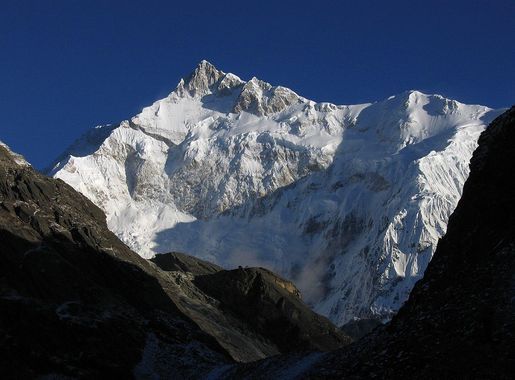
Kanchenjunga Base Camp: Nepal's Hidden Gem
Discover the untouched beauty of Kanchenjunga Base Camp in Nepal, offering stunning views, rich culture, and an adventure of a lifetime.
Kanchenjunga Base Camp is a mesmerizing destination located in the eastern region of Nepal, offering breathtaking views of the world's third-highest peak, Mount Kanchenjunga. This remote and less-traveled trek provides an unparalleled experience for adventure enthusiasts and nature lovers alike. The journey to the base camp takes you through diverse landscapes, from lush green forests to alpine meadows, and offers a chance to witness the rich culture and traditions of the local communities. The trek to Kanchenjunga Base Camp is challenging but rewarding, with the trail passing through charming villages, terraced fields, and rhododendron forests. Trekkers get the unique opportunity to see rare wildlife, such as the elusive snow leopard and red panda, in their natural habitat. The pristine environment and the serenity of the mountains make this trek an unforgettable experience. One of the highlights of the Kanchenjunga Base Camp trek is the warm hospitality of the local people. The Limbu and Sherpa communities welcome visitors with open arms, sharing their customs, folklore, and delicious traditional cuisine. The trek also offers a chance to visit monasteries and sacred sites, adding a spiritual dimension to the adventure. Whether you are an experienced trekker or a first-time visitor, Kanchenjunga Base Camp promises an extraordinary journey into the heart of the Himalayas.
Local tips in Kanchenjunga Base Camp
- Permits: Ensure you have the necessary trekking permits, including the Kanchenjunga Conservation Area Permit and the Restricted Area Permit.
- Best Time to Visit: The best time to trek is during the pre-monsoon (March to May) and post-monsoon (September to November) seasons.
- Physical Fitness: Prepare yourself physically for the trek, as it involves long hours of walking and high altitudes.
- Guides and Porters: Hiring a local guide and porter can enhance your experience and help you navigate the challenging terrain.
- Acclimatization: Take time to acclimatize to the altitude to avoid altitude sickness. Plan rest days in your itinerary.
- Local Etiquette: Respect local customs and traditions. Always ask for permission before taking photos of people or religious sites.
Kanchenjunga Base Camp: Nepal's Hidden Gem
Kanchenjunga Base Camp is a mesmerizing destination located in the eastern region of Nepal, offering breathtaking views of the world's third-highest peak, Mount Kanchenjunga. This remote and less-traveled trek provides an unparalleled experience for adventure enthusiasts and nature lovers alike. The journey to the base camp takes you through diverse landscapes, from lush green forests to alpine meadows, and offers a chance to witness the rich culture and traditions of the local communities. The trek to Kanchenjunga Base Camp is challenging but rewarding, with the trail passing through charming villages, terraced fields, and rhododendron forests. Trekkers get the unique opportunity to see rare wildlife, such as the elusive snow leopard and red panda, in their natural habitat. The pristine environment and the serenity of the mountains make this trek an unforgettable experience. One of the highlights of the Kanchenjunga Base Camp trek is the warm hospitality of the local people. The Limbu and Sherpa communities welcome visitors with open arms, sharing their customs, folklore, and delicious traditional cuisine. The trek also offers a chance to visit monasteries and sacred sites, adding a spiritual dimension to the adventure. Whether you are an experienced trekker or a first-time visitor, Kanchenjunga Base Camp promises an extraordinary journey into the heart of the Himalayas.
When is the best time to go to Kanchenjunga Base Camp?
Iconic landmarks you can’t miss
Himalayas
Explore the breathtaking beauty and spiritual heritage of the Himalayas, the world's highest mountain range, offering adventure and tranquility for every traveler.
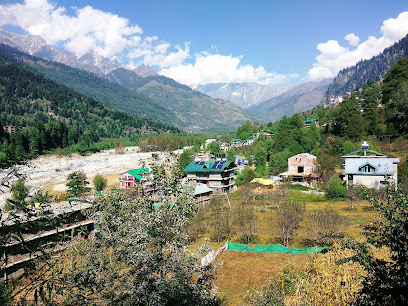
Kangchenjunga
Explore the breathtaking beauty of Kangchenjunga, the majestic third highest peak in the world, and immerse yourself in rich local culture.
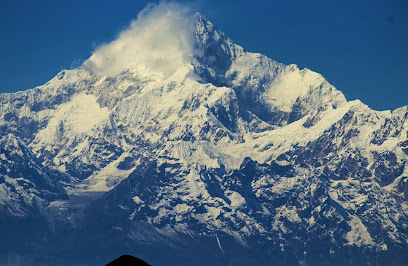
Khangchendzonga National Park
Explore the unparalleled beauty and rich biodiversity of Khangchendzonga National Park, a UNESCO World Heritage gem in the heart of the Himalayas.

Sandakphu
Discover the stunning vistas and rich biodiversity at Sandakphu, the highest peak in West Bengal, a paradise for trekkers and nature lovers.
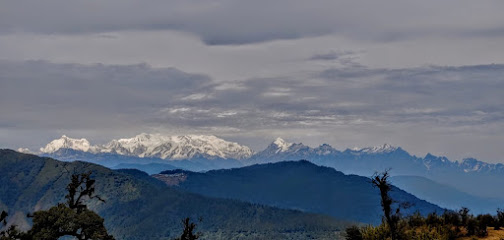
Everest Base Camp
Experience the breathtaking beauty and adventure at Everest Base Camp, the iconic starting point for climbing the world's highest peak.
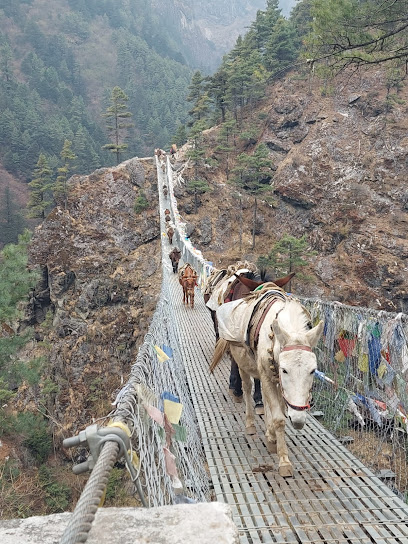
Antu View Tower Samalbung
Experience breathtaking views of Mt. Kanchenjunga at Antu View Tower, a stunning tourist attraction in the tranquil hills of Samalbung.
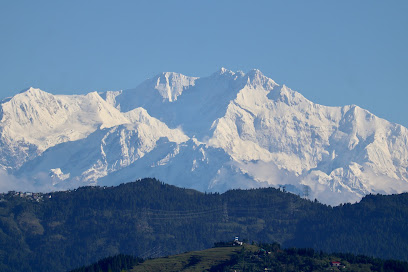
Gorak Shep
Experience the breathtaking beauty of Gorak Shep, the final stop before embarking on the Everest Base Camp trek, surrounded by majestic Himalayan peaks.
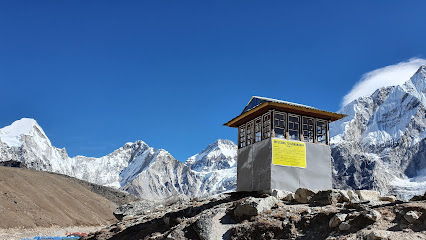
Makalu Barun National Park
Discover the breathtaking beauty of Makalu Barun National Park, home to majestic peaks and rich biodiversity in the heart of the Himalayas.
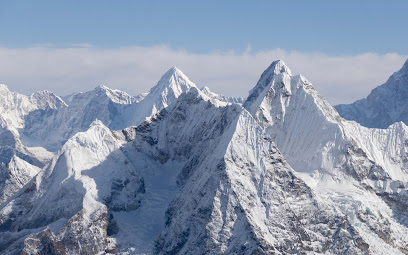
Tonglu, West Bengal
Explore the serene beauty of Tonglu, West Bengal, where breathtaking Himalayan views and tranquil trails await every traveler.
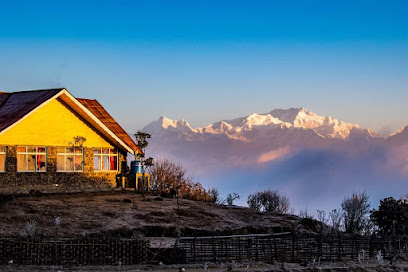
Phalut
Explore Phalut, a majestic peak in West Bengal, offering breathtaking views of Kanchenjunga and Everest amidst serene natural beauty.
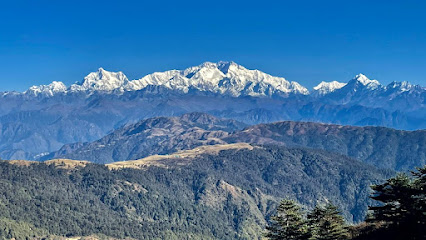
Dhaulagiri I
Explore the towering heights and breathtaking beauty of Dhaulagiri I, one of the world's highest peaks in the majestic Himalayas of Nepal.

Barsey Rhododendron Sanctuary
Experience the breathtaking beauty and vibrant colors of the Barsey Rhododendron Sanctuary, a hidden gem in Sikkim's lush landscape.
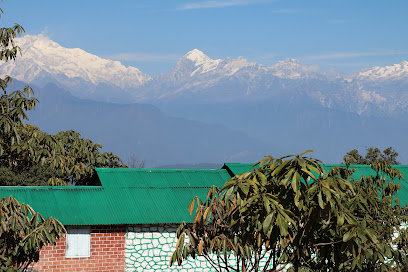
Kanchenjunga Conservation Area
Discover the majestic Kanchenjunga Conservation Area, a hidden gem in the Himalayas rich in biodiversity and stunning landscapes.
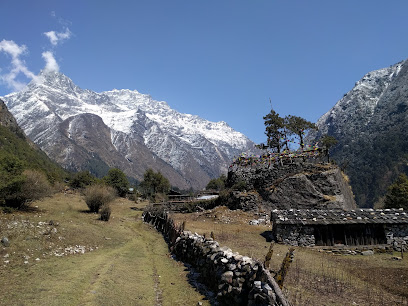
Haramukh
Explore the breathtaking beauty of Haramukh, Kashmir's majestic mountain peak, perfect for trekking and nature lovers seeking adventure.
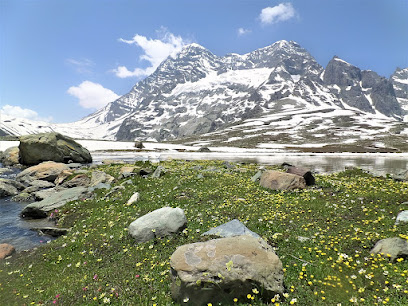
Khangchengyao
Discover the breathtaking beauty of Khangchengyao, a stunning mountain peak in Sikkim, India, perfect for adventure seekers and nature lovers.
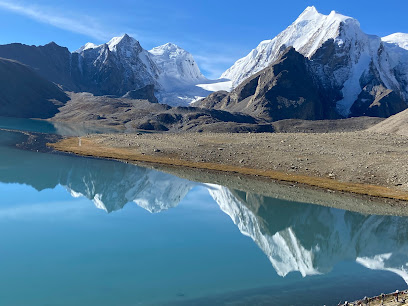
Unmissable attractions to see
Kangchenjunga
Discover the breathtaking beauty and cultural richness of Kangchenjunga, the third-highest mountain in the world, nestled in the majestic Himalayas.
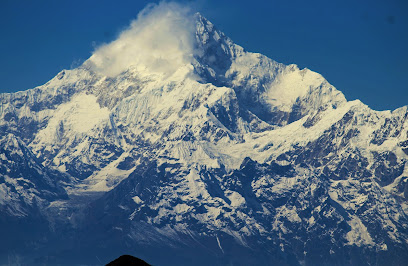
Khangchendzonga National Park
Explore the breathtaking beauty and rich biodiversity of Khangchendzonga National Park, a UNESCO World Heritage Site in the heart of the Himalayas.
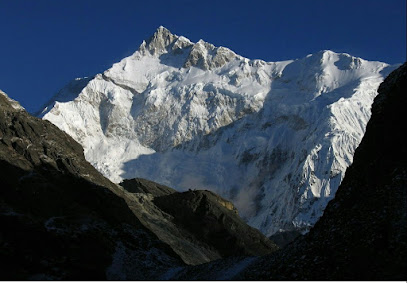
Kanchenjunga Falls
Experience the breathtaking beauty of Kanchenjunga Falls, a natural wonder in Sikkim that enchants visitors with its stunning views and serene ambiance.
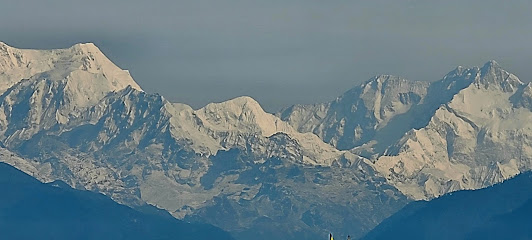
Sandakphu
Discover the breathtaking beauty of Sandakphu, the highest peak in West Bengal, where stunning views of Kanchenjunga and Everest await every adventurer.
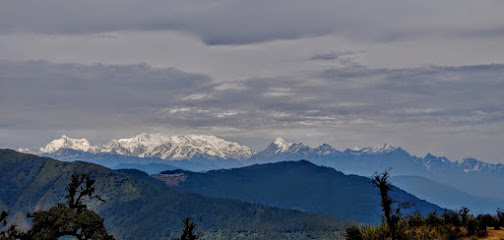
Everest Base Camp
Experience the breathtaking beauty of Everest Base Camp, where adventure meets culture at the foot of the world's highest peak.
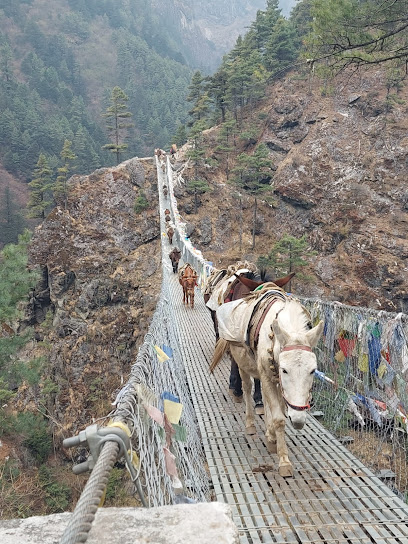
Antu View Tower Samalbung
Discover breathtaking views of Mt. Kanchenjunga at Antu View Tower, a serene escape in the heart of the Himalayas.
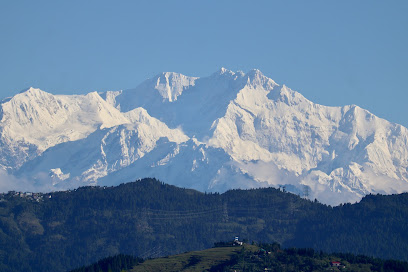
Sandakphu West Bengal
Experience the breathtaking beauty of Sandakphu, where the Himalayas unveil their majestic peaks and rich biodiversity invites exploration.
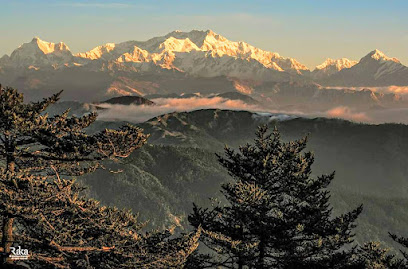
Barsey Rhododendron Sanctuary
Explore the breathtaking Barsey Rhododendron Sanctuary, a vibrant national park in Sikkim known for its stunning floral displays and majestic mountain views.

Kanchenjunga Conservation Area
Experience the unparalleled beauty of Kanchenjunga Conservation Area, a hiking paradise with rich biodiversity and stunning mountain vistas.

Dzongri Top
Embark on an unforgettable adventure at Dzongri Top, Sikkim, where breathtaking views of Kanchenjunga await every trekking enthusiast.
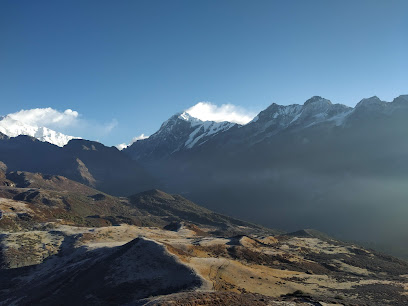
Everest Base Camp Trek
Discover the breathtaking beauty of the Everest Base Camp Trek, where adventure meets the majestic Himalayas and rich Sherpa culture.
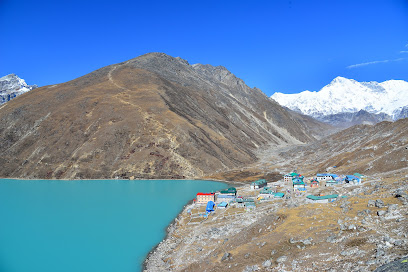
Goecha La View Point 1
Discover breathtaking views of Kanchenjunga and the serene beauty of Sikkim at Goecha La View Point 1, a must-visit for all nature enthusiasts.
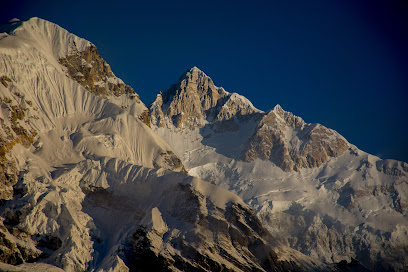
Sandakphu/Phalut trek
Discover the stunning Sandakphu/Phalut trek, where the Himalayas unveil their majestic beauty, offering unparalleled views of Kanchenjunga and Mount Everest.
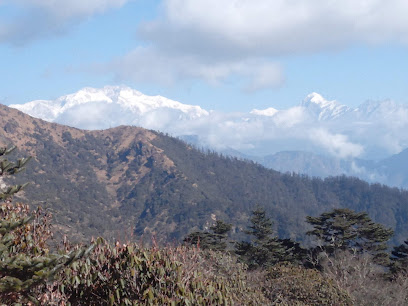
Singalila Pass
Discover breathtaking views of Kanchenjunga and immerse yourself in nature at the enchanting Singalila Pass in Sikkim.
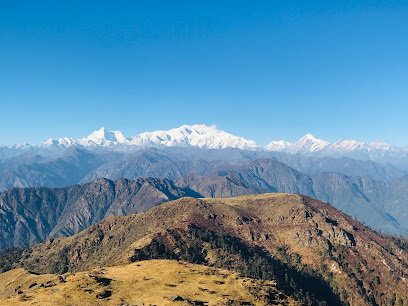
Pioneer Adventure Pvt. Ltd
Explore the breathtaking beauty of Nepal with Pioneer Adventure, your trusted partner for trekking and adventure sports in the heart of the Himalayas.
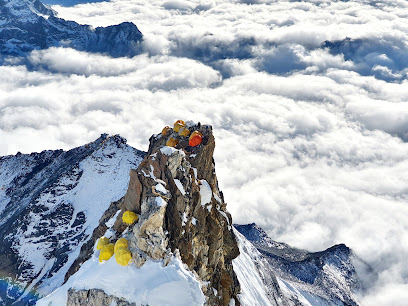
Essential places to dine
Kathmandu Grill Restaurant
Experience the best of Nepali flavors at Kathmandu Grill Restaurant in Thamel - where culinary tradition meets modern taste.
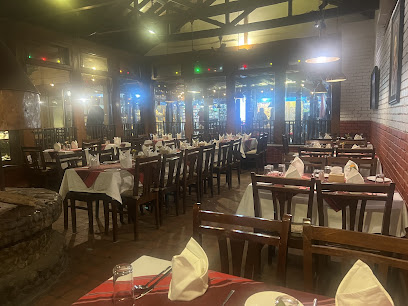
Le Sherpa Restaurant
Experience exquisite fine dining at Le Sherpa Restaurant in Kathmandu - where local flavors meet elegant presentation.
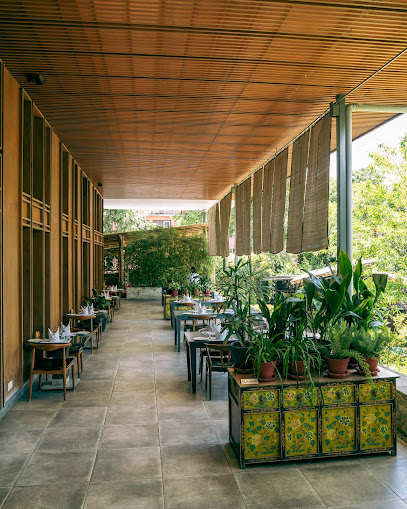
Gaia Restaurant & Coffee Shop
Experience delicious local and international cuisine at Gaia Restaurant & Coffee Shop in Kathmandu's vibrant Thamel district.
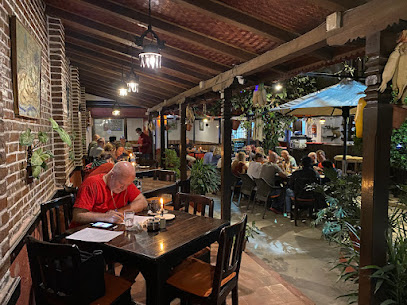
Tamarind Restaurant
Experience the best of authentic Chinese cuisine at Tamarind Restaurant in Lalitpur - where flavors meet tradition.
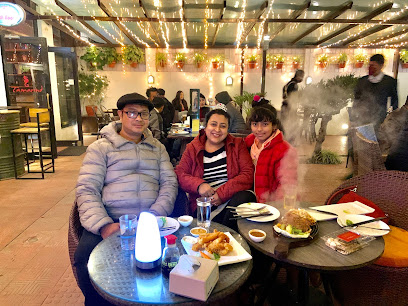
Forest & Plate
Discover culinary excellence at Forest & Plate in Kathmandu - where fresh ingredients meet innovative flavors in a cozy ambiance.
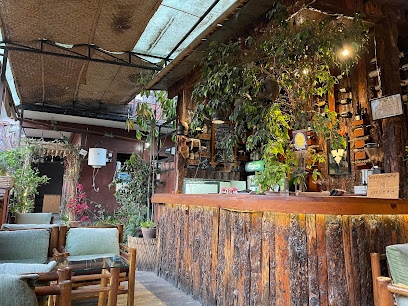
Nepalaya Rooftop Restaurant
Experience breathtaking views and authentic flavors at Nepalaya Rooftop Restaurant in Kathmandu's vibrant Thamel district.
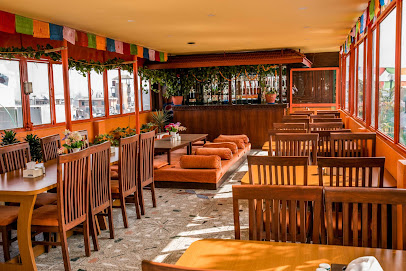
Hill Top Restaurant
Discover Hill Top Restaurant in Golghar: Enjoy delectable fast food while soaking up breathtaking views of Benighat's stunning landscape.
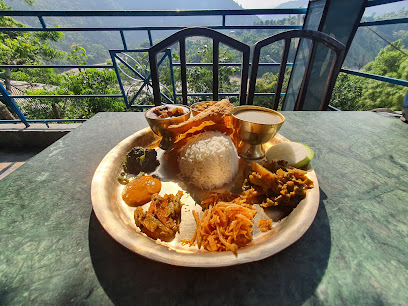
The Best Kathmandu Kitchen
Experience authentic Nepali cuisine at The Best Kathmandu Kitchen in Thamel - where every dish tells a story.

Revolution Cafe
Experience diverse flavors at Revolution Cafe in Kathmandu – where Asian fusion meets European charm amidst live music.
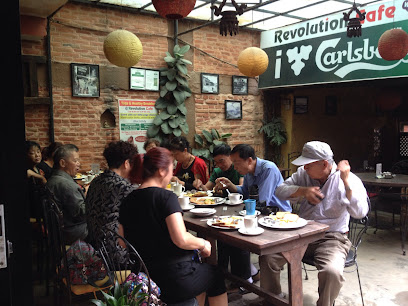
Samsara Garden
Discover the tranquility of Samsara Garden in Kathmandu—where delicious breakfasts meet serene garden views.
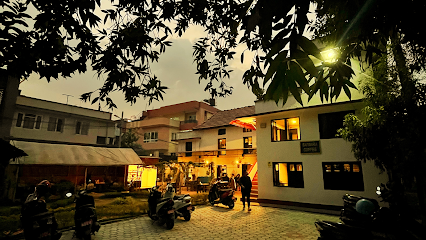
Lhakpa's Chulo
Discover the flavors of Tibet at Lhakpa's Chulo in Lalitpur—an authentic dining experience awaits every visitor.
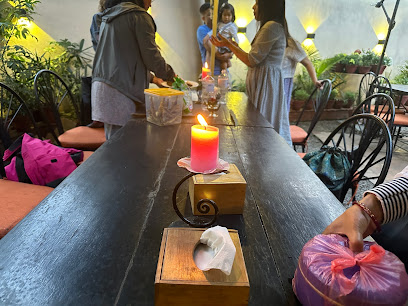
Paradise Garden Restaurant
Experience authentic Nepalese breakfasts in a tranquil garden setting at Paradise Garden Restaurant in Kathmandu.
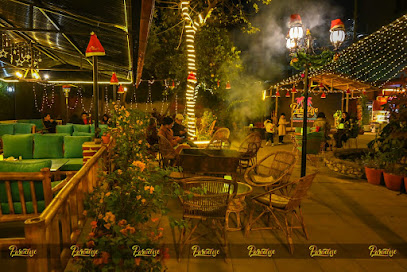
Himalayan Dorjee Restaurant
Experience authentic Himalayan cuisine at Himalayan Dorjee Restaurant in Pokhara – where every bite tells a story of tradition and flavor.
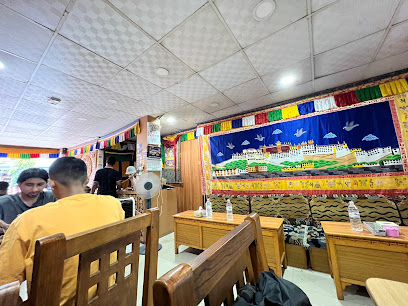
Copacabana Kathmandu Restaurant
Discover vibrant Latin American cuisine at Copacabana Kathmandu - where every meal is an adventure filled with flavor and live music.
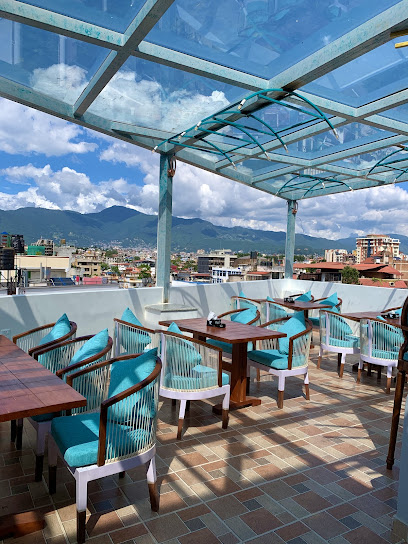
Namche Thakali Kitchen and Inn
Discover the authentic taste of Nepal at Namche Thakali Kitchen and Inn - where traditional flavors meet warm hospitality.
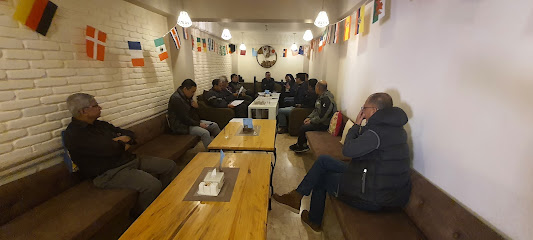
Markets, malls and hidden boutiques
Shona's Alpine
Explore the great outdoors with Shona's Alpine—your trusted source for top-notch outdoor clothing and gear in Kathmandu's Thamel district.
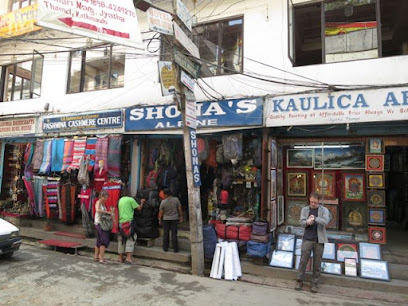
Pack and Pedal Nepal
Discover the breathtaking landscapes of Nepal with Pack and Pedal Nepal, your ultimate bicycle rental and adventure hub in Birtamode.
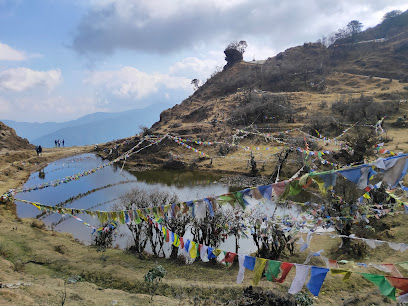
Junkiri Tribal Nature
Explore unique women's clothing and accessories at Junkiri Tribal Nature, a cultural haven in the heart of Pokhara.
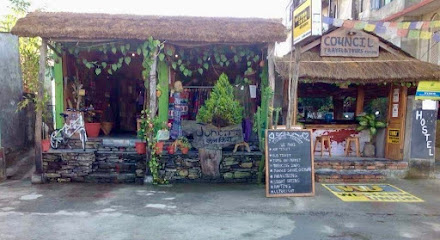
Kanchenjunga Trekking
Discover the breathtaking beauty and rich culture of Kanchenjunga through an unforgettable trekking adventure in the heart of the Himalayas.
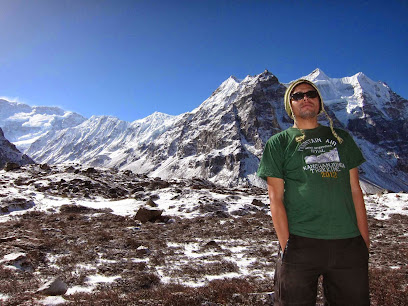
Drichu
Explore fashionable ladies' clothing at Drichu in Kathmandu, where quality meets style in a charming boutique setting.

Kanchenjunga Base Camp Trek
Experience the breathtaking beauty and cultural richness of the Kanchenjunga Base Camp Trek in the heart of the Himalayas.
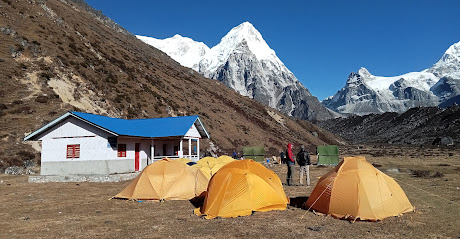
Annapurna trekking shop
Explore the Annapurna region with confidence from the Annapurna Trekking Shop, your local resource for trekking gear and expert advice.
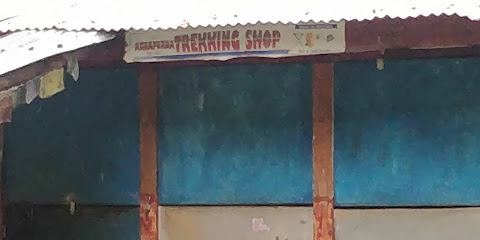
Kanchenjunga Trek
Discover the awe-inspiring beauty of the Kanchenjunga Trek, where adventure meets cultural richness in the heart of the Himalayas.
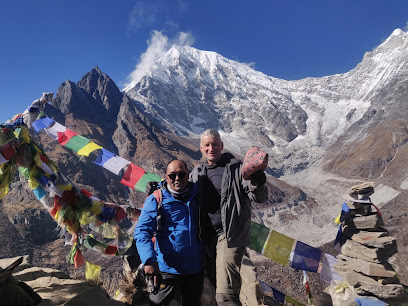
Mitlung
Explore the flavors of Phungling at Mitlung, a charming bakery offering artisanal breads and pastries in a cozy setting.

Essential bars & hidden hideouts
Kangchenjunga
Discover the breathtaking beauty of Kangchenjunga, the third highest mountain in the world, and embark on an unforgettable adventure in the heart of the Himalayas.

Le Sherpa Restaurant
Experience the finest in Nepali cuisine at Le Sherpa Restaurant, where exceptional flavors meet elegant dining in the heart of Kathmandu.
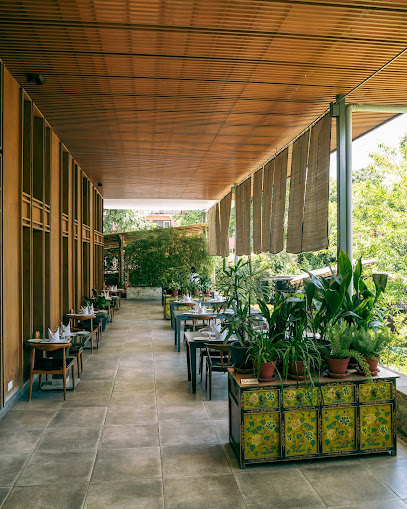
Sam's Bar
Discover the heart of Kathmandu's nightlife at Sam's Bar, where exceptional drinks meet vibrant culture in a lively atmosphere.
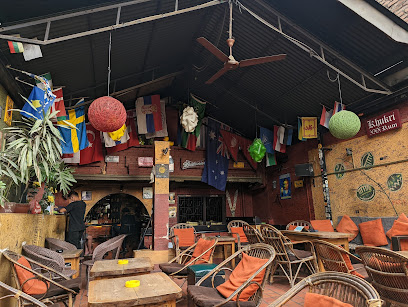
The Address Lounge
Experience the vibrant nightlife of Kathmandu at The Address Lounge, where exquisite drinks meet a chic atmosphere.
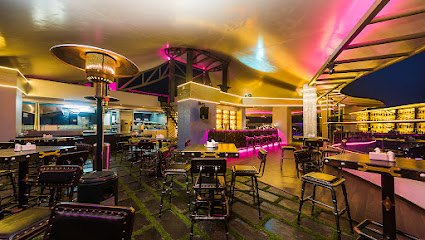
Senate Club
Dance the night away at Senate Club in Thamel, Kathmandu - where vibrant music meets an energetic atmosphere.
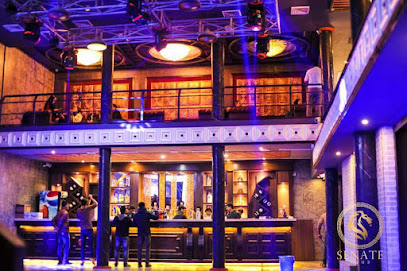
Buddha Bar
Discover Buddha Bar in Kathmandu: a perfect blend of relaxation, vibrant atmosphere, and delightful cuisine amidst the lively Thamel district.
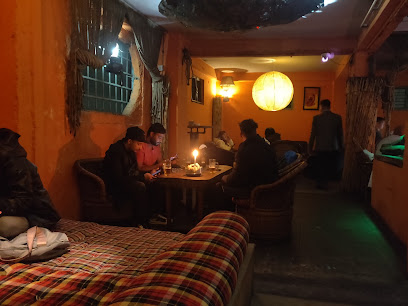
Everest Base Camp
Experience the breathtaking beauty and adventure at Everest Base Camp, the gateway to the world's highest peak, surrounded by rich culture and stunning landscapes.
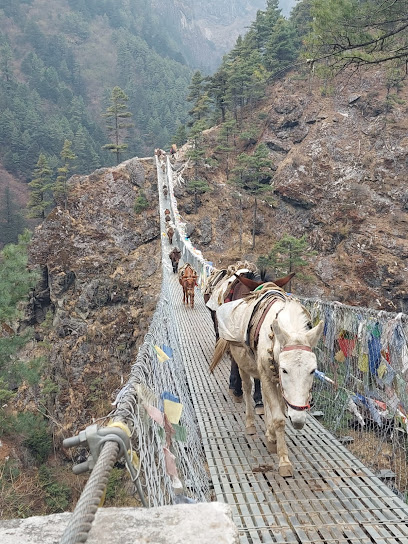
Oskar Bar & Grill
Discover the vibrant flavors of Kathmandu at Oskar Bar & Grill, where exceptional grilled cuisine meets a lively atmosphere.
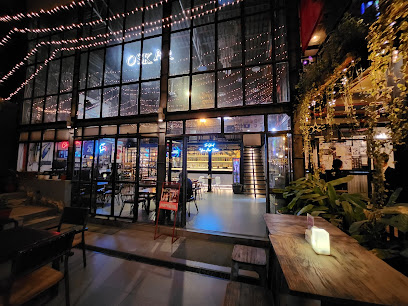
Cityscape Lounge and Bar
Experience Kathmandu's nightlife at Cityscape Lounge and Bar, where modern elegance meets local flavors in a vibrant setting.
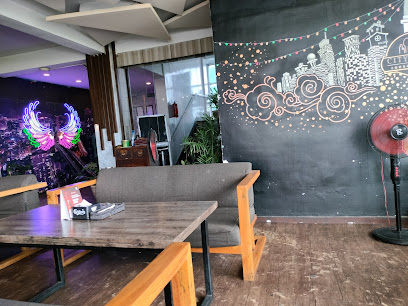
Base Camp: Outdoor Lifestyle
Discover the vibrant nightlife at Base Camp: Outdoor Lifestyle, a stylish bar in Lalitpur offering refreshing drinks and a welcoming atmosphere.
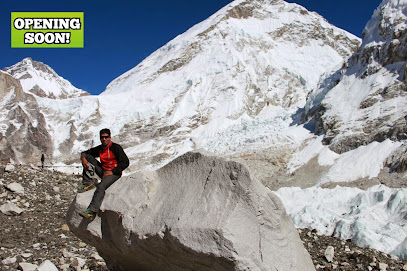
Kanchenjunga Conservation Area
Explore the breathtaking Kanchenjunga Conservation Area, a trekking paradise with wild landscapes and rich cultural heritage in the heart of the Himalayas.

Bitters & Co.
Explore the vibrant nightlife of Kathmandu at Bitters & Co., where innovative cocktails and delightful gastropub fare await.

BlackBird
Discover the vibrant nightlife of Kathmandu at BlackBird, a lively bar in the heart of Thamel offering unique cocktails and an unforgettable atmosphere.

Chitrey
Experience the serene beauty of Chitrey, a stunning campground in Nepal, perfect for nature lovers and adventure seekers alike.
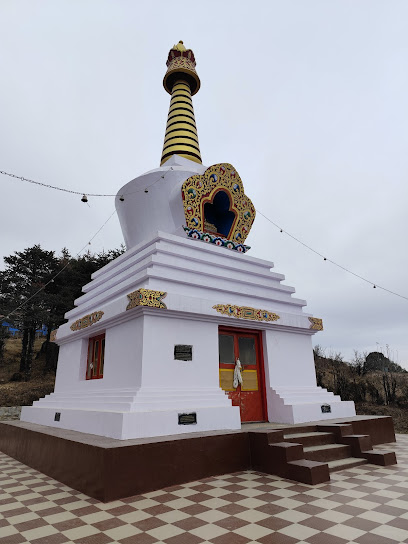
Trekkers Bar
Experience the vibrant atmosphere of Trekkers Bar in Kathmandu, where sports, local flavors, and camaraderie come together for an unforgettable night out.
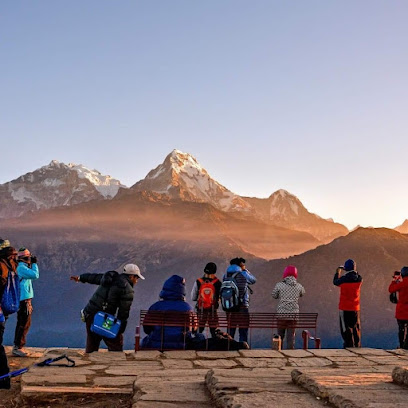
Local Phrases about Kanchenjunga Base Camp
-
- Helloनमस्ते
[Namaste] - Goodbyeफेरि भेटौं
[Feri bhetou] - Yesहो
[Ho] - Noहोइन
[Hoin] - Please/You're welcomeकृपया
[Kripaya] - Thank youधन्यवाद
[Dhanyabad] - Excuse me/Sorryमाफ गर्नुहोस्
[Maf garnuhos] - How are you?तपाईंलाई कस्तो छ?
[Tapailai kasto chha?] - Fine. And you?राम्रो छ। तिमीलाई?
[Ramro chha. Timilai?] - Do you speak English?तिमी अंग्रेजी बोल्नुहुन्छ?
[Timi angreji bolnuhunchha?] - I don't understandमैले सम्झिन
[Maile samjhin]
- Helloनमस्ते
-
- I'd like to see the menu, pleaseकृपया मेनु हेर्न चाहन्छु
[Kripaya menu herne chahanchu] - I don't eat meatम मासु हाम्थैन
[Ma masu hamthain] - Cheers!चियर्स!
[Cheers!] - I would like to pay, pleaseकृपया भुक्तानी गर्न चाहन्छु
[Kripaya bhuktani garn chahanchu]
- I'd like to see the menu, pleaseकृपया मेनु हेर्न चाहन्छु
-
- Help!मदद गर!
[Madad gar!] - Go away!दूर हिँड
[Dur hinda] - Call the Police!पुलिसलाई डाइल गर!
[Police lai dial gar!] - Call a doctor!डाक्टरलाई डाइल गर!
[Doctor lai dial gar!] - I'm lostम गुम्दा गयेको छु
[Ma gumda gayeko chu] - I'm illम बिमार छु
[Ma bimar chu]
- Help!मदद गर!
-
- I'd like to buy...म खरिद गर्न चाहन्छु...
[Ma kharid garn chahanchu...] - I'm just lookingम सिर्जना गरिरहेको छु
[Ma sirjana gari raheko chu] - How much is it?यो कति हो?
[Yo kati ho?] - That's too expensiveयो धेरै महँगो छ
[Yo dherai mahango chha] - Can you lower the price?के तपाईं मूल्य कम गर्न सक्छ?
[Ke tapai mulya kam garn sakchha?]
- I'd like to buy...म खरिद गर्न चाहन्छु...
-
- What time is it?कति बज्यो?
[Kati bajyo?] - It's one o'clockएक बजेको छ
[Ek bajeko chha] - Half past (10)दस बजे अर्ध समय
[Das baje ardha samaya] - Morningबिहान
[Bihan] - Afternoonदिउँसो
[Diunso] - Eveningसाँझ
[Sanjh] - Yesterdayहिजो
[Hijo] - Todayआज
[Aaj] - Tomorrowभोलि
[Bholi] - 1एक
[Ek] - 2दुई
[Dui] - 3तीन
[Teen] - 4चार
[Char] - 5पाँच
[Paanch] - 6छ
[Chh] - 7सात
[Saath] - 8आठ
[Aath] - 9नौ
[Nau] - 10दस
[Das]
- What time is it?कति बज्यो?
-
- Where's a/the...?... कहाँ छ?
[... Kaha chha?] - What's the address?ठेगाना के हो?
[Thegana ke ho?] - Can you show me (on the map)?तपाईंले मलाई देखाउन सक्छिनुहुन्छ?
[Tapainle malai dekhau skhinchha?] - When's the next (bus)?अर्को (बस) कहिले छ?
[Arko (bas) kahile chha?] - A ticket (to ....)(....) को टिकट
[(....) Ko ticket]
- Where's a/the...?... कहाँ छ?
History of Kanchenjunga Base Camp
-
Kanchenjunga, the third highest mountain in the world, has long been a subject of reverence and mythology among the local communities. The name 'Kanchenjunga' itself is derived from Tibetan words that mean 'Five Treasures of Snow,' referring to its five prominent peaks. Local folklore believes these treasures are hidden within the mountain and include gold, silver, precious stones, grain, and holy scriptures. The mountain is also considered sacred by the Sikkimese people, who believe it is the abode of their mountain deity, Dzö-nga.
-
The first recorded attempt to climb Kanchenjunga was made by a British expedition led by Aleister Crowley in 1905. Although the team did not reach the summit, their efforts marked the beginning of serious mountaineering endeavors in the region. The expedition faced numerous challenges, including harsh weather conditions and difficult terrain, which underscored the formidable nature of Kanchenjunga.
-
The first successful ascent of Kanchenjunga was achieved on May 25, 1955, by a British expedition led by Charles Evans, with Joe Brown and George Band being the first to reach the summit. Following a local custom, they stopped a few feet short of the actual summit to honor the mountain's sacred status. This expedition set a precedent for future climbers, who continue to respect this tradition.
-
In 1997, the Kanchenjunga Conservation Area (KCA) was established by the Government of Nepal. Encompassing an area of 2,035 square kilometers, the KCA aims to protect the region's unique biodiversity and cultural heritage. Managed by the local communities with support from conservation organizations, the KCA has been successful in preserving the natural environment and promoting sustainable tourism.
-
The region around Kanchenjunga Base Camp is home to diverse ethnic communities, including the Limbu, Sherpa, Rai, and Gurung people. Each group has its own distinct culture, traditions, and languages. Festivals such as Losar (Tibetan New Year) and Chasok Tangnam (a Limbu harvest festival) are celebrated with great enthusiasm, showcasing the rich cultural tapestry of the area. Visitors to the base camp often have the opportunity to experience these vibrant traditions firsthand.
-
The Kanchenjunga Base Camp trek has become increasingly popular among adventure enthusiasts and trekkers in recent years. The trek offers a challenging and rewarding experience, taking travelers through remote villages, lush forests, and alpine meadows. The establishment of tea houses and improved trekking infrastructure has made the region more accessible while ensuring that the local communities benefit from the tourism industry.
Kanchenjunga Base Camp Essentials
-
Kanchenjunga Base Camp is in the Taplejung District in northeastern Nepal. The nearest airports are in Kathmandu (Tribhuvan International Airport) and Bhadrapur. From Kathmandu, you can take a domestic flight to Bhadrapur, which is followed by a long drive to Taplejung. Alternatively, you can take a domestic flight to Suketar Airport in Taplejung. From Taplejung, a multi-day trek is required to reach the base camp. The trek usually starts from Taplejung Bazaar, and the journey takes approximately 12-15 days.
-
Transportation within the region primarily involves trekking. Once you reach Taplejung, your primary mode of transportation to the base camp will be on foot. Porters and yaks can be hired to carry heavy loads. Local buses and jeeps are available for road travel up to Taplejung. Keep in mind that the conditions of the roads can be challenging due to weather and terrain.
-
The official currency in Nepal is the Nepalese Rupee (NPR). While in major cities like Kathmandu, you can use credit cards, it is advisable to carry cash when traveling to remote regions like Kanchenjunga Base Camp. ATMs are scarce or non-existent in these areas, so ensure you withdraw enough cash beforehand. It is also a good idea to carry smaller denominations for easier transactions in rural areas.
-
Kanchenjunga Base Camp is generally safe, but it is essential to take standard precautions. Be cautious of altitude sickness and prepare with proper acclimatization. The region has a low crime rate, but petty theft can occur, so keep your belongings secure. Always trek with a guide or in a group to avoid getting lost. There are no specific high-crime areas targeting tourists in the trekking regions.
-
In case of emergency, contact the nearest police station or health post. The emergency number in Nepal is 100 for police and 102 for an ambulance. Many trekking groups carry satellite phones for emergencies. It's crucial to have comprehensive travel insurance that covers high-altitude trekking and emergency evacuation. Helicopter evacuations are available but can be costly without insurance.
-
Fashion: Do wear comfortable trekking gear and dress in layers. Avoid wearing revealing clothing, as it may be considered disrespectful. Religion: Do respect local customs and traditions. Always ask for permission before photographing people or religious sites. Public Transport: Do be patient and respectful when using local transport. Vehicles may be crowded and schedules unpredictable. Greetings: Do greet locals with a 'Namaste', a traditional greeting. Eating & Drinking: Do try local foods like dal bhat, but avoid drinking tap water. Always carry a reusable water bottle and use water purification methods.
-
To experience Kanchenjunga Base Camp like a local, engage with the local communities along the trekking route. Learn a few basic phrases in Nepali to communicate better. Visit traditional tea houses to enjoy local hospitality and cuisine. Participate in local festivals if your visit coincides with any, as these can provide a deeper cultural experience. Support local businesses by purchasing handmade crafts and goods.
Trending Landmarks in Kanchenjunga Base Camp
Nearby Cities to Kanchenjunga Base Camp
-
Things To Do in Darjeeling
-
Things To Do in Siliguri
-
Things To Do in Namche Bazaar
-
Things To Do in Paro
-
Things To Do in Phuentsholing
-
Things To Do in Thimphu
-
Things To Do in Punakha
-
Things To Do in Wangdue Phodrang
-
Things To Do in Rangpur
-
Things To Do in Trongsa
-
Things To Do in Nagarkot
-
Things To Do in Bhaktapur
-
Things To Do in Bumthang
-
Things To Do in Patan
-
Things To Do in Jakar




